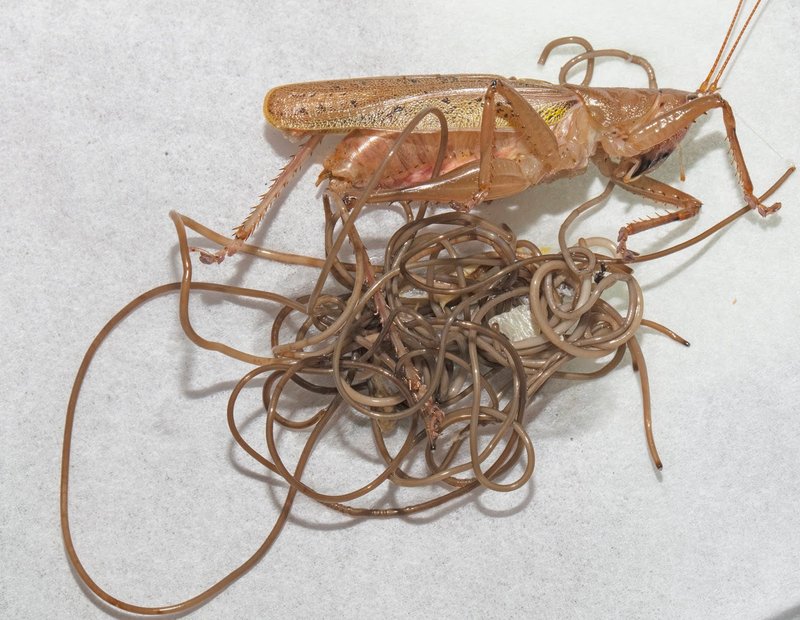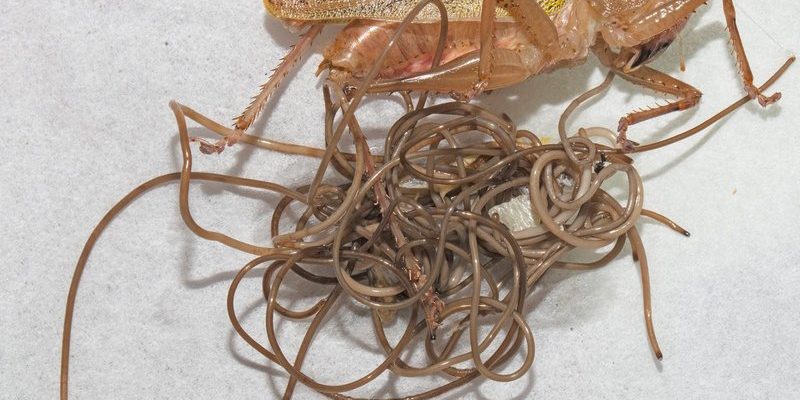
Picture this: you’re out for a walk in a damp area, maybe near a stream or a decaying log. You might notice worms wriggling in the soil, but have you ever stopped to wonder how they differ from each other? While some worms are just going about their business of eating and growing, others have bizarre stories to tell. In this blog, we’ll dive into what makes hairworms unique and how they stack up against other similar species in their environment.
What Are Hairworms?
Hairworms, scientifically known as *Nematomorpha*, are fascinating parasites that primarily infect insects. They’re often described as long, thin, and almost hair-like, which is actually where they get their name. These fascinating creatures can grow quite large, sometimes reaching over a foot long, depending on their host. Most commonly, they find their home inside grasshoppers and crickets, slowly taking over their nervous systems until the insects are driven to water—a sort of “sacrificial” act for the worms.
Here’s the thing: once the hairworm reaches maturity, it manipulates the host to leap into water, allowing it to escape and reproduce. This transformation from a silent invader to the puppet master of its host is what makes hairworms incredibly unique. Honestly, it’s something right out of a science fiction story—but it’s very real!
Life Cycle of Hairworms
The life cycle of a hairworm is nothing short of remarkable. It begins when an insect consumes hairworm larvae, often by eating contaminated vegetation. After entering the host, the larvae grow, feeding off the insect’s nutrients. Over time, the hairworm develops in the insect’s body, often causing little harm initially.
As the hairworm matures, it starts to take control of its host’s brain and behavior. You might wonder how it does this—imagine having a tiny alien controlling your body! The infected insect begins to crave water, leading to its eventual demise when it jumps into a body of water. Once in the water, the hairworm bursts free and swims away, ready to start the cycle all over again. It’s a wild and somewhat creepy transformation that showcases the complexity of nature.
Comparing Hairworms with Other Worm Species
While hairworms are captivating, they share their habitats with several other worm species, such as earthworms and roundworms. Each one comes with its own set of traits and ecological roles. Understanding these differences can provide a clearer picture of the ecosystem dynamics.
For instance, earthworms are well-known soil engineers. They improve soil quality by aerating it as they burrow, allowing for better nutrient absorption for plants. In contrast, roundworms, or nematodes, are incredibly diverse and can be found in various environments, some of which are parasites like the hairworm. While hairworms affect insects, many roundworms can be found in the soil, helping decompose organic matter or causing diseases in plants.
Habitat Preferences
Hairworms thrive in moist environments, primarily near bodies of water like ponds, streams, and marshes. They need a wet atmosphere to complete their lifecycle, especially for reproduction. In comparison, earthworms prefer nutrient-rich soil, where they can consume organic material and thrive.
Roundworms, on the other hand, are more adaptable. They can be found in a range of habitats, from soil and marine environments to even your backyard! You might even find them in compost heaps, helping break down organic matter. This adaptability makes roundworms one of the most abundant organisms on the planet.
Behavior and Interactions
Hairworms are essentially masters of manipulation. Once they infect a host, they change the insect’s behavior to suit their needs, showcasing an incredible level of control. This is a stark contrast to earthworms, which exhibit more straightforward behaviors—eating, burrowing, and reproducing without any need for host manipulation.
In the case of roundworms, their interactions can range from beneficial to harmful. Some roundworms help in decomposing organic materials, contributing positively to the ecosystem, while others can be harmful to plants or animals. This variety in behavior showcases the complex relationships that exist in the ecosystem that hairworms and similar worms inhabit.
Ecological Importance
Hairworms may seem creepy, but they play a crucial role in regulating insect populations. By infecting and controlling their hosts, they can help maintain a balance in their ecosystems. When certain insect populations grow too large, hairworms act as a natural control mechanism, ensuring that these populations don’t become overly dominant.
In contrast, earthworms are important for soil health. They improve soil structure, promote water retention, and help with nutrient cycling. Roundworms, depending on the species, can have both beneficial and detrimental effects, showcasing the diverse roles worms play in ecosystems.
Worms might not be the first creatures that come to mind when you think of fascinating wildlife, but the differences between hairworms and their similar species reveal a complex web of life in our ecosystems. From hairworms manipulating their hosts to earthworms nourishing the soil, each species contributes uniquely to the environment.
Next time you’re out enjoying nature, take a moment to appreciate these incredible creatures. Whether it’s a hairworm emerging from a grasshopper or an earthworm enriching your garden, remember that these little beings have their own stories to tell. By understanding their roles, we can foster a deeper respect for the delicate balance of life in our backyards and beyond.

